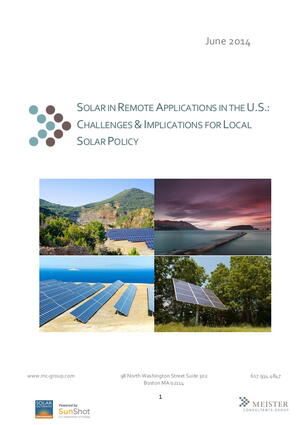
Since the landfall of Hurricane Sandy in October 2012, municipalities and jurisdictions in the United States have been increasingly focused on the vulnerability of their electricity infrastructure and enhancing resilience to extreme events. Renewable energy and distributed generation resources have a critical role to play in increasing the resilience of electric grids. In remote areas and on islands, these issues have risen to the forefront, because remote electric grids function in near isolation, making grid reliability, electricity supply, cost controls and stability essential. The integration of such resources into smaller, isolated grids poses unique challenges given the relatively high penetration rates of solar photovoltaics (PV). In the U.S. these remote locations include Hawai’i, Puerto Rico, Guam, Marianas, and the U.S. Virgin Islands, communities off the coast of Maine and Massachusetts, mainland communities in Alaska, and even U.S. government installations such as national parks and military bases. This paper explores how policy makers and planners interested in furthering grid resilience and increasing reliance on renewable energy resources can learn from the opportunities and challenges facing remote communities as they work to shift their generation mix to higher levels of solar PV.
